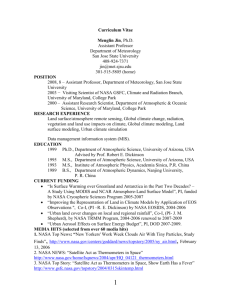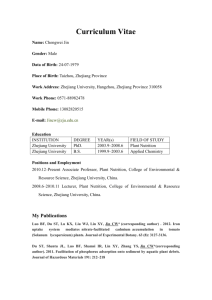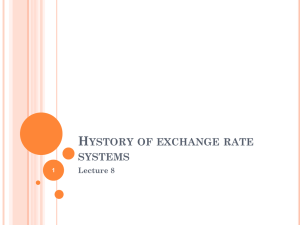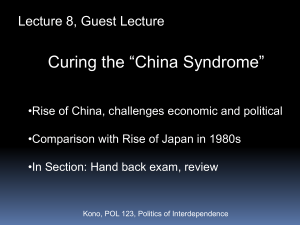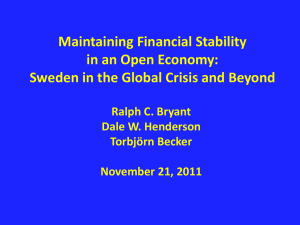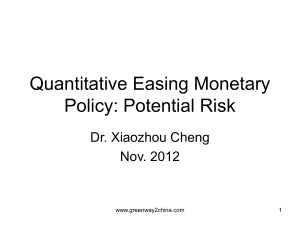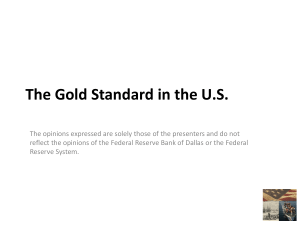Ppt Miguel Otero
advertisement
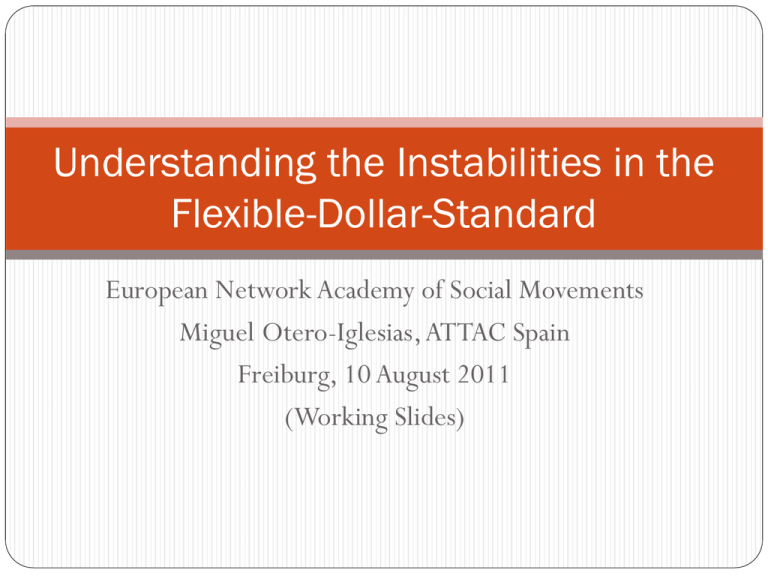
Understanding the Instabilities in the Flexible-Dollar-Standard European Network Academy of Social Movements Miguel Otero-Iglesias, ATTAC Spain Freiburg, 10 August 2011 (Working Slides) The Era of Bretton Woods (1944-1971) The International Monetary System (IMS) is based on the dollar standard linked to gold The dollar is fixed at $35 the ounce of gold The rest of currencies are linked to the dollar Trade is promoted – Free current account Speculation and Exchange rate movements are hindered: Capital Account controls Since the 1960s the US is losing in competitiveness and Europe and Japan start to catch up Nonetheless, the US enjoys the ‘Exorbitant Privilege’ The Problem of the Triffin Dilemma The US needs to run current account deficits to provide the world with the necessary liquidity The US is the demand pull in the IMS This creates constant current account imbalances between the US and its major creditor countries This undermines the credibility of the dollar in the long run In the 1970s it was mostly Europe (especially Germany) In the 1980s it was Japan In the 1990s, there is the emergence of the New Economy and the US is able to regain competitiveness despite a strong dollar In the 2000s the creditor is China Monetary Power in Action Monetary Power is the capacity to delay and deflect the adjustment costs as much as possible Delay means extending the time of adjustment Deflecting means that when adjustment comes, the monetary power is able to deflect some of the adjustment burden upon others This is known as the ‘Dollar Weapon’ You talk down the dollar, you introduce expansionary monetary and fiscal policy, you ask others to appreciate and to implement expansionary fiscal policy With Germany and with Japan the US had the upper hand because it provided the security umbrella The Exorbitant Privilege since BW The Dollar Index since BW The Flexible-Dollar-System and the Explosion of Liquidity Exponential Growth in FX Reserves GLOBAL FOREIGN EXCHANGE RESERVES ($m) 10,000,000 9,000,000 8,000,000 7,000,000 6,000,000 5,000,000 4,000,000 3,000,000 2,000,000 1,000,000 9 n00 Ju l-0 0 Ja n01 Ju l-0 1 Ja n02 Ju l-0 2 Ja n03 Ju l-0 3 Ja n04 Ju l-0 4 Ja n05 Ju l-0 5 Ja n06 Ju l-0 6 Ja n07 Ju l-0 7 Ja n08 Ju l-0 8 Ja n09 Ju l-0 9 Ja n10 Ju l-1 0 Ja n11 Ja l-9 Ju Ja n9 9 0 Other developing Mexico Brazil Algeria Saudi Arabia Russia Other industrial Australia UK Eurozone US Other Asia Malaysia Thailand Hong Kong Singapore India Korea Taiwan Japan China Consequence of this liquidity: Constant Financial Crises Situation since the tech bubble burst in 2000 Who carries the adjustment cost? The US applies a policy of “benign neglect” in relation to the dollar The US tries to convince China to revalue its currency as it did before with Germany and Japan China does not give in and maintains a peg to the dollar until 2005, and reintroduces it in 2008 The hawkish attitude of the European Central Bank brings an appreciation bias to the euro Europe is the only major trade player that has not an active policy in relation to its FX rate Euro-dollar Exchange rate Dollar-Chinese Yuan Exchange Rate Currency Wars Arrive to Brazil POST-CRISIS REAL EXCHANGE RATES (JP Morgan) 150.0 140.0 130.0 120.0 110.0 100.0 90.0 Russia India Turkey Indonesia -1 1 ay M M ar -1 1 n11 Ja -1 0 N ov -1 0 Se p l-1 0 Ju -1 0 ay 0 China M ar -1 M n10 Ja -0 9 N ov -0 9 Se p l-0 9 Ju -0 9 ay 9 Brazil M ar -0 M Ja n09 80.0 Mexico Current situation: “To put it crudely, the US wants to inflate the rest of the world, while the latter is trying to deflate the US. The US must win, since it has infinite ammunition: there is no limit to the dollars the Federal Reserve can create. What needs to be discussed is the terms of the world’s surrender: the needed changes in nominal exchange rates and domestic policies around the world.” Martin Wolf, Financial Times, 12 October 2010 The main features of the FDS The US is the main provider of liquidity and demand pull of the system (first Bretton Woods, and then Bretton Woods II) The system is inflationary in the good times and deflationary in recessions In the FDS adjustment falls mainly on deficit countries, but the US who enjoys the exorbitant privilege This asymmetry can be seen in the eurozone crisis The rest is exposed, therefore there is the incentive to be a surplus country (Germany, Japan, South East Asia, China) Can we have a more stable IMS? The Chinese Proposals to deal with the dollar overhang More use of the IMF SDRs Inclusion of the Yuan/RMB in the SDR basket Creation of a Substitution Account in the IMF China has proposed to create a managed floating exchange rate regime Problems: US unwilling to let its exorbitant privilege go US demands flexible yuan, independent central bank and opening of capital account (China will not accept) Can the SDR without a political authority behind? Do we need a world government? Possible Future Scenarios? 1) Increased competition between the Dollar, the Euro and the Yuan (this can lead to major disruptions if transition not managed). 2) The US will press ahead with its exorbitant privilege, more quantitative easing (QE), more liquidity, more tensions and perhaps a return to a gold link or similar (uncertainty is widespread in the IMS) 3) The international community can move towards cooperation. SDRs as harbinger for a global currency a la Bancor. (The euro might provide useful lessons) Conclusion The FDS is structurally flawed The Triffin Dilemma is the main cause of the instability The US is the main source of demand but also the main source of destabilising liquidity The growth in FX reserves is clear proof of this situation The EZ has played by the rules (flexible exchange rate and open capital account) and has carried most of the adjustment cost A unipolar monetary system induces the hegemon to exploit it A more coordinated and multilateral IMS could potentially be more stable
![Jiye Jin-2014[1].3.17](http://s2.studylib.net/store/data/005485437_1-38483f116d2f44a767f9ba4fa894c894-300x300.png)
